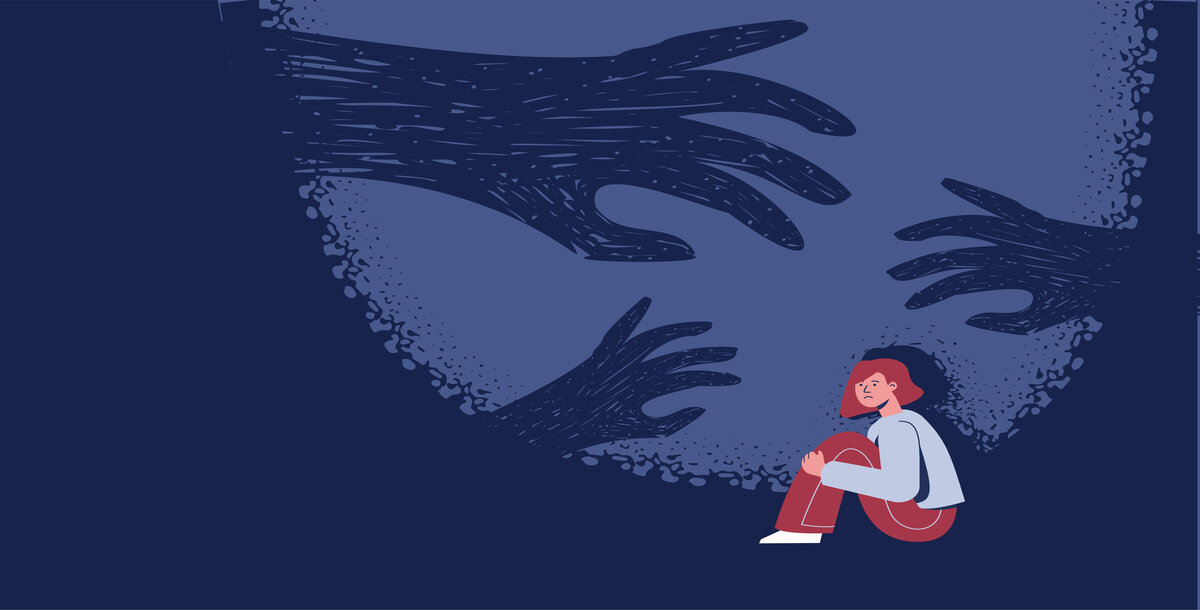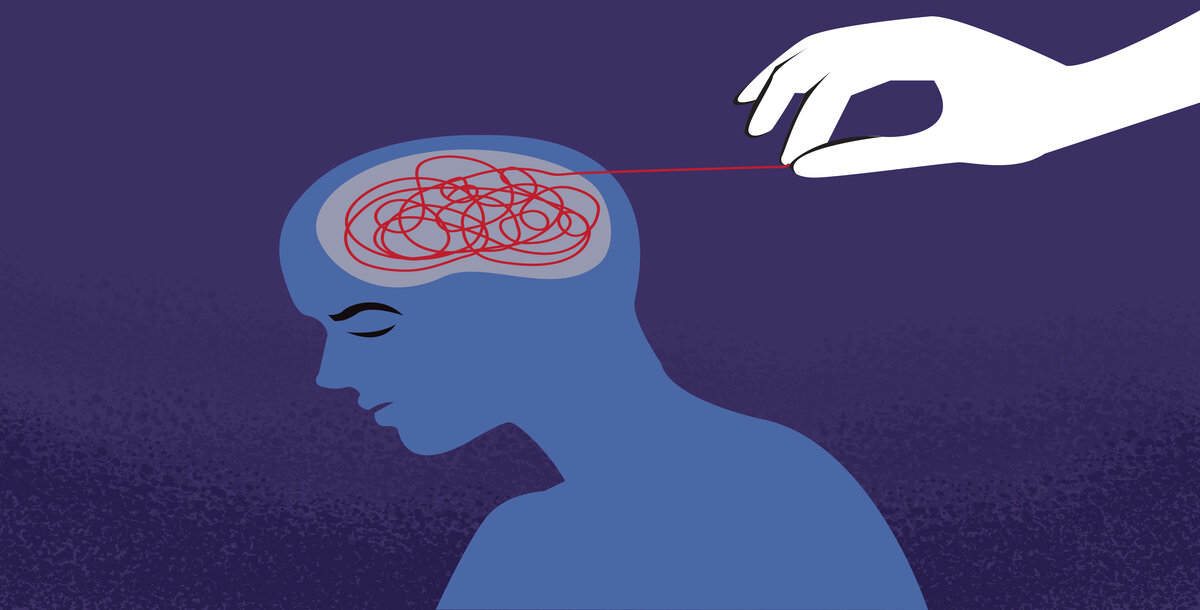Suicide and Its Impact

- What is suicide?
- Impact of suicide
- Factors affecting suicide – Age, gender, socio-economic status and profession as factors in suicide.
- Causes of suicide
- Risk factors in suicide
- Protective factors in suicide
- Warning signs of contemplation of suicide
Suicide is hurting and harming oneself with the intent to die and is a violent act directed toward the self.
A suicidal attempt is where a person injures oneself with the intent to die but fails to pass due to the action.
Suicide is a personal tragedy and crisis that ends the individual’s life prematurely and takes away all the potential growth he may have achieved. Suicide has a long-term ripple effect, affecting the lives of families, friends, societies and communities.
Every loss occurring due to suicide is irreplaceable damage to the survivors of suicide. Survivors of suicide are the near and dear ones, friends and family members who are left behind devastated and destined to live a life of guilt.
Suicides do not happen in a day but arise and stem from a deep sense of hopelessness and helplessness that a person harbours for a very long time. When life’s challenges are overwhelming, vulnerable individuals find themselves unable to solve their problems and cope with life’s challenges, and it isn’t easy to continue living. Suicides usually do not happen to end life but to escape the pain of continuing life.
The burden of the Problem
Suicide is a leading cause of death. More than 800,000 people lose their life by suicide every year globally, about one suicide per 40 sec.
In India, more than 1,00,000 people commit suicide yearly, and the count is rising annually. In comparison to 2020, the suicide rate increased to 7.2% in 2021. In 2021, the total number of suicidal deaths was 1.63 lakhs. Rates of suicide are increasing every year, with about 10% in 2020 compared to 2019.
Among the Indian states, Maharashtra reports the highest number of suicide, followed by Tamil Nadu, West Bengal, Madhya Pradesh, and Karnataka.
These states account for 50% of all suicides in India. Surprisingly, Uttar Pradesh, densely populated, reports lower suicidal rates, and most ignoble suicides are reported in Bihar state.
The reason can be for this may be due to a more resilient society living under constant hardship and also due to underreporting of suicide due to the stigma associated with suicide
Age as a factor in suicide
No age group is immune to suicidal attempts and death by suicide, but the rates are highest among the 20-45 age group. The age groups 18 -30 and 30 – 45 are the most vulnerable groups resorting to suicide and account for about 67-70% of total suicides.
Gradually, rates of suicide and suicidal attempts are significantly increasing in the younger population, and a rise of about 4% was noted in comparison to the previous year.
Suicide is one of the leading causes of death after accidents among children (10 -14 yrs) and adolescents aged 15 to 24 years; boys are more likely to commit it than girls.
Gender as a factor in suicide
Gender differences impact suicidal behaviour.
The chances of committing suicide are far more for males than females, with a ratio around 4:1, and males are 4-5 times more likely to attempt and die from suicide than females; however, women attempt twice as much suicide as men.
The most logical reason contributing to the difference in suicide deaths among men and women is the choice of the methods adopted for suicide, with a high propensity of men to use more lethal and violent means compared to women.
Many issues related to gender increase women’s susceptibility and vulnerability and place them at a higher risk of suicide. Depression is an important cause and contributing factor to suicide, and it is more common in women than in men.
Other issues can be domestic violence, abuse, assault, fertility and reproductive problems, hormonal imbalances, anxiety disorders, eating disorders like anorexia nervous, bulimia nervous, body dysmorphic disorder etc.
Socioeconomic status as a factor in suicide
Suicide is a multifactorial problem, and socioeconomic status is directly related to the prevalence of suicide. Poverty, low income, financial instability, unstable housing and economic hardship increase the chances of suicide in vulnerable individuals.
Good family and social support act as a protective factor, reducing the likelihood of suicide during adverse circumstances. Lack of resources in rural settings and moving to urban areas for betterment adds to stress and increases vulnerability to suicide in the face of adversity.
The profession as a factor in suicide
Suicide rates are impacted by the job and occupation of the individual. The highest suicide rates are among daily wage workers, homemakers and unemployed people, possibly due to their financial dependencies and insecurities.
Other high-risk groups include students, farmers and small-scale self-employed persons.
Causes of Suicide
Suicide is a multifactorial problem; thus, various causes alone or in combination make the individual susceptible and vulnerable to suicide. Among all the reasons, family problems and chronic physical illness account for about 50 % of all suicide cases.
Various issues linked with the causation of suicide include
- Family problems
- Chronic physical illnesses
- Mental illnesses
- Drug abuse/ alcohol addiction
- Marriage-related problems
- Unemployment
- Failure in examination
- Love affair-related issues
- Poverty
- Death of a dear/loved one
- Financial loss, indebtedness, bankruptcy
- Property dispute
- Fall in social reputation
Permutation and a combination of different factors operate in any individual; most of us have varying degrees of resilience which helps us to fight and cope with continuous life challenges. But some who are susceptible find themselves in hopeless situations, which gives rise to intense feelings to quit and end life.
Risk Factors in suicide
Life is not fair for anyone, and we all have our share of hardships and struggles in life. Depending upon the genetic make-up and environmental exposure, we develop the skills required to fight odd life situations and to cope with the stressors. Some factors pose a risk of suicide for vulnerable individuals.
A few of them are:
- Self-harm
- Personality traits of aggression and impulsivity, borderline, antisocial or narcissistic personality
- Substance abuse
- Mental illness
- Anxiety & reaction to stress
- Depression in primary/first-degree relatives
- Gender differences and association with sex
- Violence, including domestic violence
- Marital problems
- Financial difficulties and hardship
- Poverty
- Perceived humiliations
- Family dispute
- Parental death by suicide
- Housing insecurity
- Being married
- Chronic pain, living alone
- Physical and sexual abuse
Protective Factors in suicide
Every disease outcome is an interplay of nature and nurture, which means genes and environment. Despite genetic vulnerability, a cordial atmosphere and social support can prevent many instances of suicide. Some protective factors for suicide include:
- Good social support
- Warm and supportive family environment
- Financial stability
- Accessibility to the quality healthcare facility
- Housing securities
- Productive, meaningful occupation
- Tolerance and ability to cope with difficult life situations
- Positive life events
- Good education
- Parenthood/Motherhood – having a child <2 years old
- Spirituality in phenomenological terms
- The ability to regulate emotions

Warning signs of Contemplation of Suicide
Suicidal intentions and contemplation are not always apparent to the eyes not trained to understand them. Most of the time, persons intending to attempt suicide keep their endeavour hidden. However, some of the signs reflect in behaviour and understanding and becoming familiar with subtle signs can identify a person at risk and may save the lives of near and dear ones.
Signs which may help in the identification of contemplation of suicide includes
- Feeling about hopelessness, helplessness and worthlessness,
- Failure to find a reason to continue life
- Feelings of being trapped in a life situation from which escape is not possible
- Trying to get their possessions and affairs in order, trying to arrange things for loved ones, making a will, donating personal possessions
- Searching for a means to end life, reading about modes of harming, arranging dangerous and lethal stuff
- Disturbed biological functions
- Little or excessive sleep
- Little or excessive appetite
- Showing signs of distress, despair
- Rapid mood swings
- Maybe agitated, aggressive or anxious
- Significantly reduced social interactions, tendency to stay alone and aloof, avoiding contact and communications with family members, friends and relatives
- Excessive use of alcohol and other drugs
- Recent experience of severe stressors like the death of a spouse or loved one, job loss, financial crisis, loss of reputation etc
- There may be a history of suicidal thought, intent or act in the past.
Suicide is happening around us all the time, taking away precious lives and adding trauma to near and dear ones for life. It is a collective responsibility of all of us to be vigilant for people around us and extend a helping hand when needed.
An act of kindness, patient listening and some encouraging words may save a life. We need to train our eyes and mind to equip ourselves to read the subtle signs of impending suicide and intervene to prevent it.
Being detected on time increase the possibility of averting unfortunate incidences of suicide and saving a life. Expert psychiatrists and mental health professionals are capable enough to restore the balance of life provided persons are brought to care on time.
